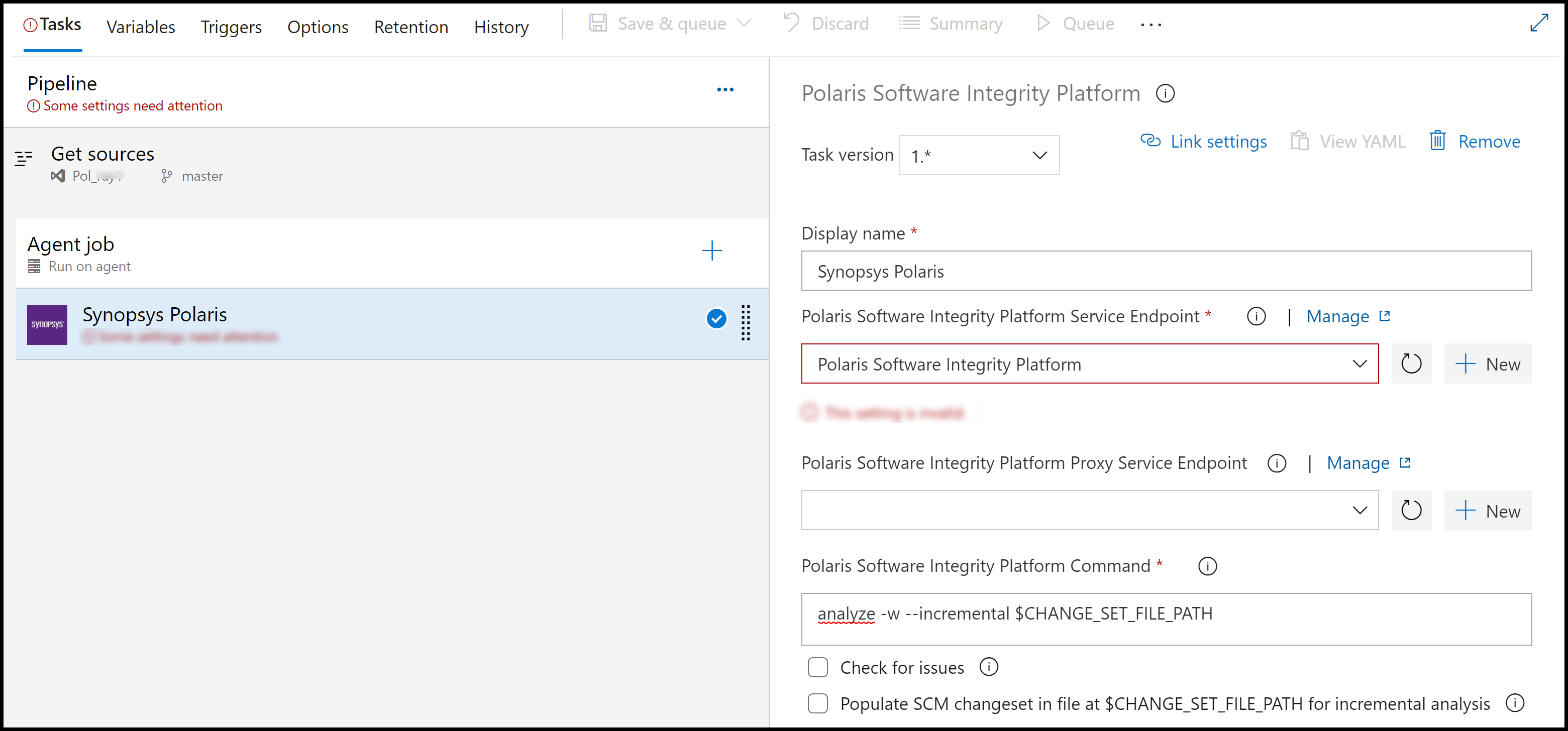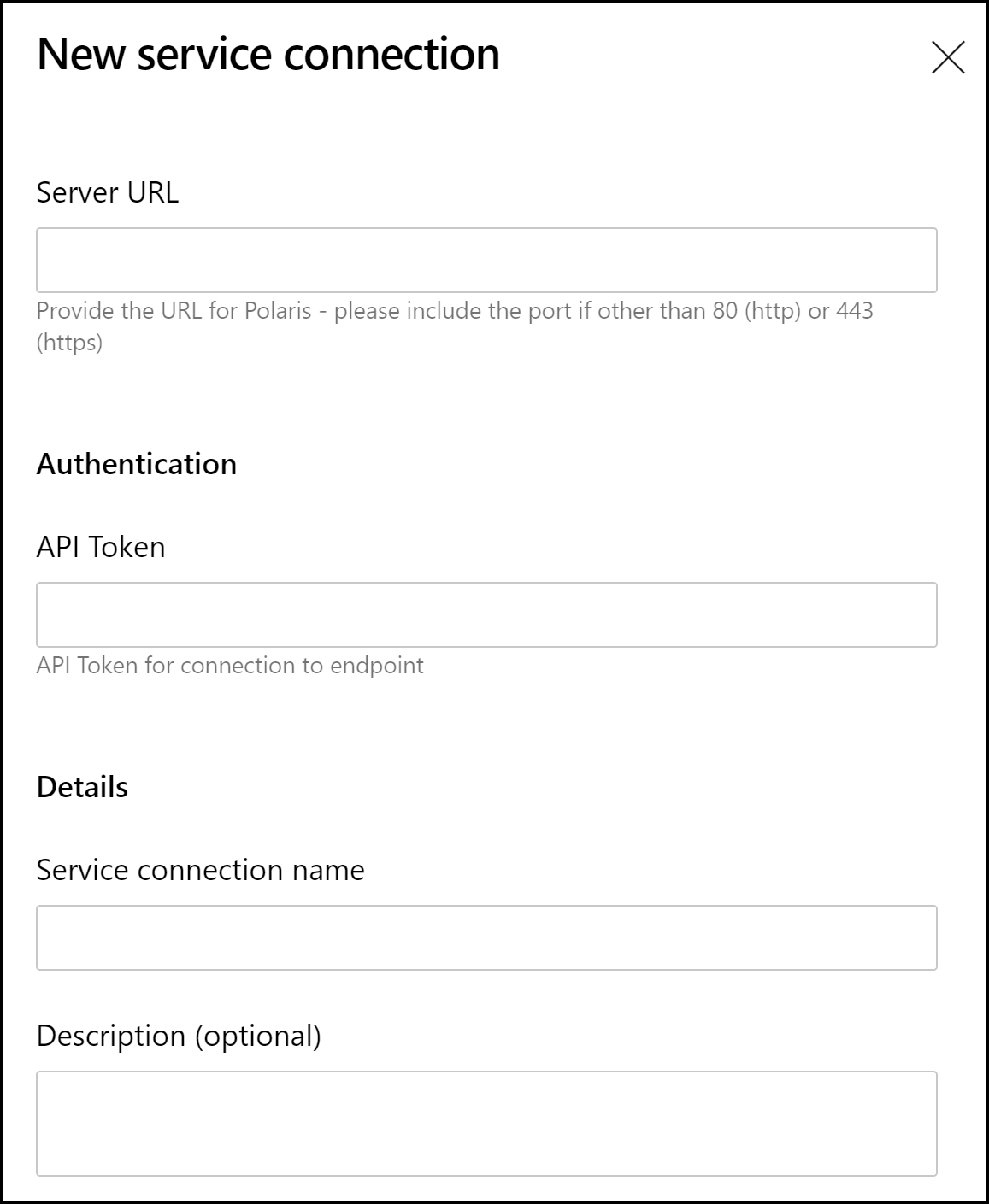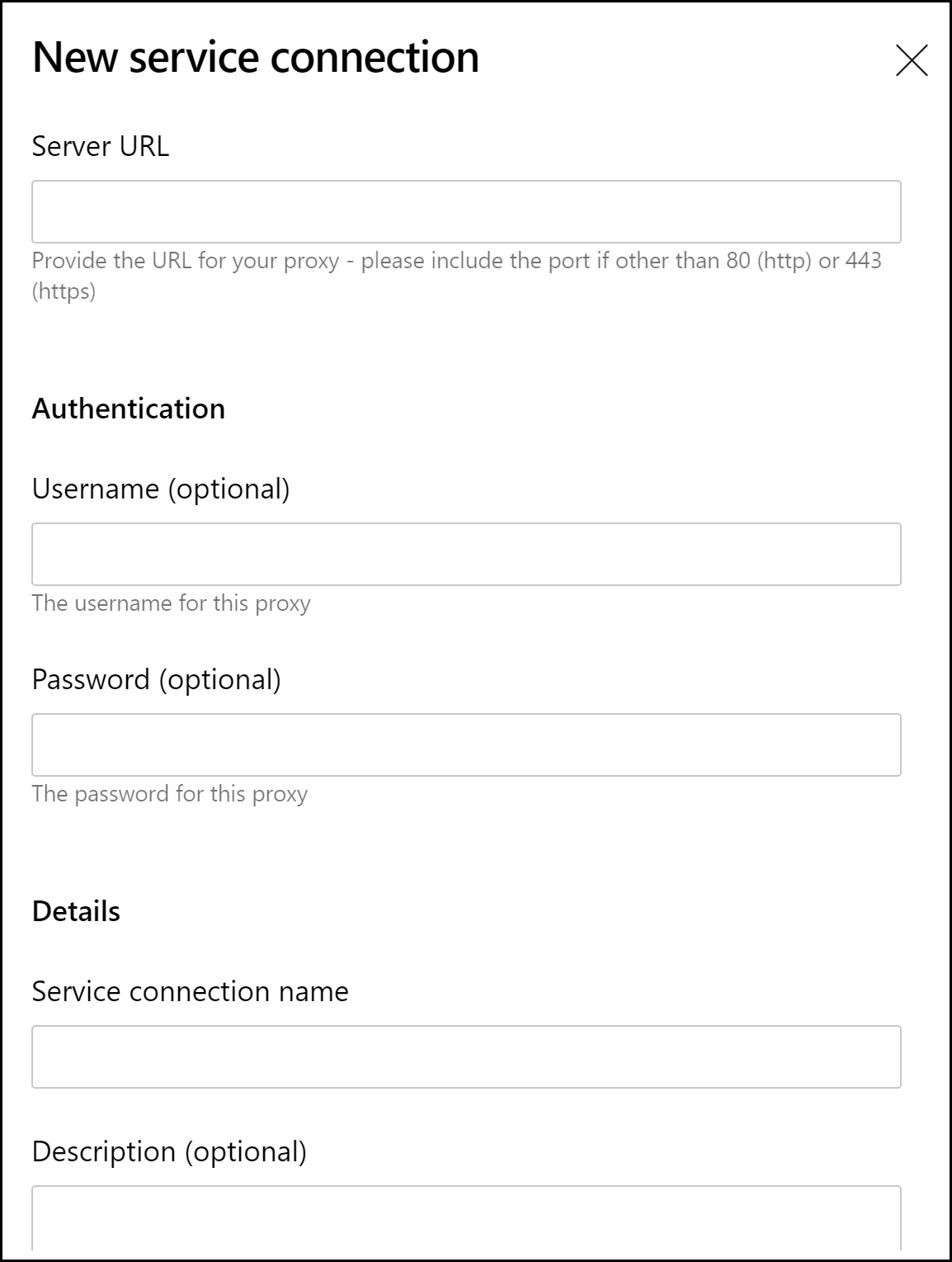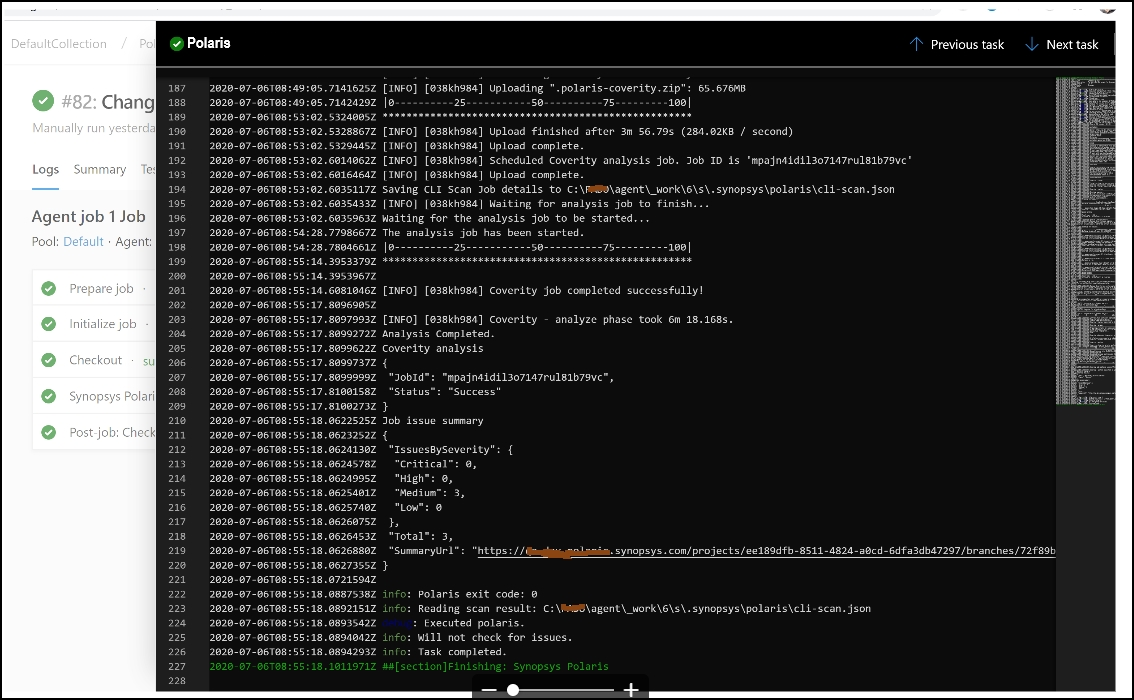Configuring the Plug-in
Configure the plug-in when you add it to your pipeline.
When you've added the Polaris Software Integrity Platform (Polaris) plug-in you can configure the plug-in.
-
Type a name in the Display name field.

- Click + New to add a new Polaris Software Integrity Platform Service Endpoint.
- Complete the Polaris server details.

-
To add a Polaris Software Integrity Platform Proxy Service Endpoint, click +
New.
- Type a name for the proxy connection in the Service connection name field.
- Type the proxy Server URL.
- Optional: Enter the username and password used to access the proxy.
- Type a name for the proxy connection in the Service connection name field.
- Optional: Add a description.
- To enable other pipelines to use this service connection, leave the Grant access permission to all pipelines checkbox selected.

-
Use the Polaris Software Integrity Platform Command
field to enter the
analyze -wcommand. Leave the Check for issues checkbox selected so that the issue count is returned and the build is passed or failed. You can also add other Coverity commands.Note: Using the-wflag ensures that the Polaris CLI will wait and use the JSON file generated by Polaris to check for issues. If you don't use the-woption and you leave Check for issues checkbox selected, the plug-in polls and waits for the job to finish so that there is an issue count to determine whether the build passes or fails.Example of a job where Check for issues checkbox is not selected and build passes with issues.

-
To enable Incremental analysis (LCA), do the following:


